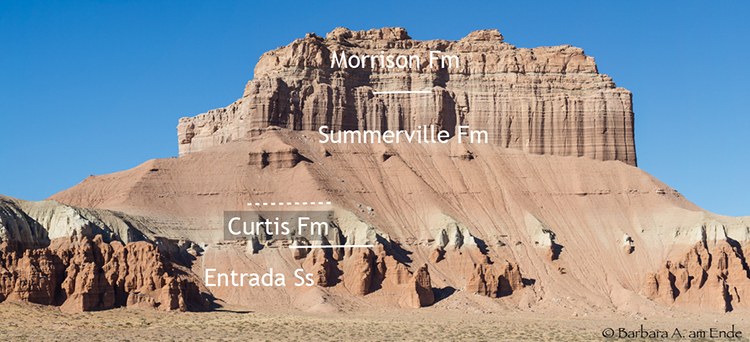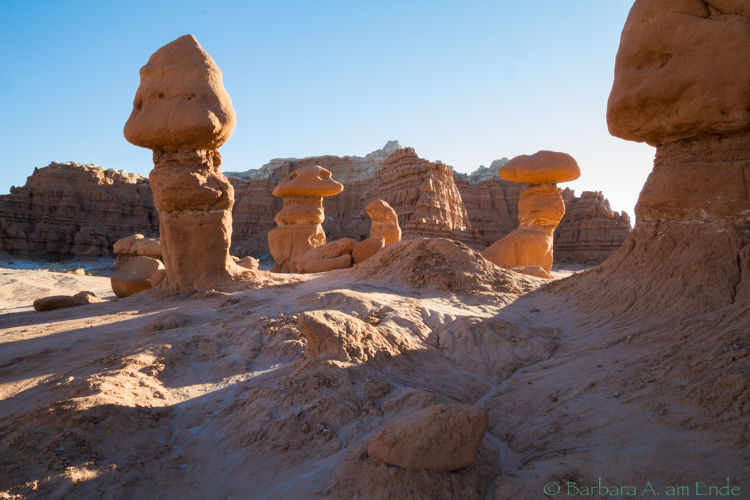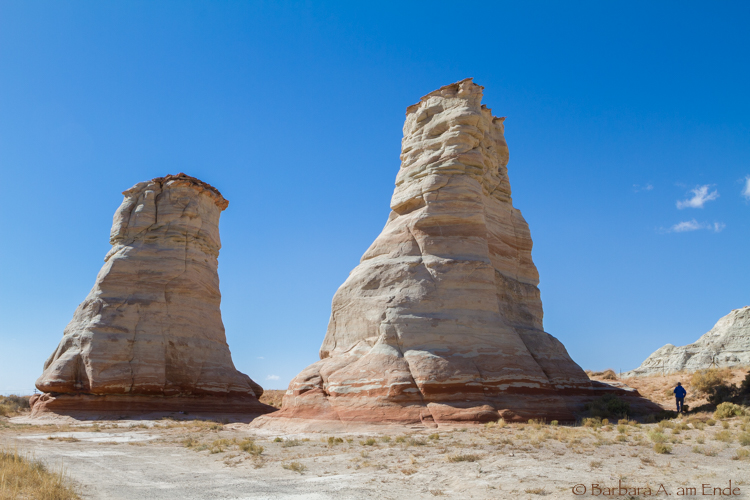The Entrada Sandstone is a widespread eolian sandstone across much of the Colorado Plateau. If you don't see the layers above or below--and is not contiguous with other identifable units--it might be mistaken for the Navajo Sandstone or other unit. The color of the Entrada various across its extent, as illustrated in the photographs below. The Dewey Bridge Member, originally part of the Entrada has now been reassigned to the underlying Carmel Formation.
Figure 1 -- Wild Horse Butte greets visitors to Goblin Valley State Park near Hanksville, UT. The stratigraphy really stands out for a person to get a handle on what they're seeing.
Figure 2 -- The above shot is of the famous hoodoos of Goblin Valley State Park, Utah. The hoodoos are formed in the Entrada Ss. Some of the overlying whitish Curtis Fm can be see in the far background.
Figure 3 -- The massive sandstone, the Slick Rock Member, forming the Balanced Rock and the rock in the background to the left.
Figure 4 -- The Elephants Feet near Tonalea, AZ. The pillars are preserved because of a thin caprock at the top. According to the USGS geologic map of the area, this is the Jurassic Cow Springs Sandstone. In other areas, the Cretaceous Dakota Formation overlies the Entrada and forms a caprock. The Dakota is nearby, but as mentioned, the USGS maps this as Cow Springs.
Figure 5 -- the Rehobeth Member of the Entrada Ss has the look of the Dewey Bridge Member of the Carmel Formation (Fig. 3), but careful study by ___ has shown that they are definitely not the same. This photo is from Sand Canyon in McElmo Canyon, Colorado.
|




